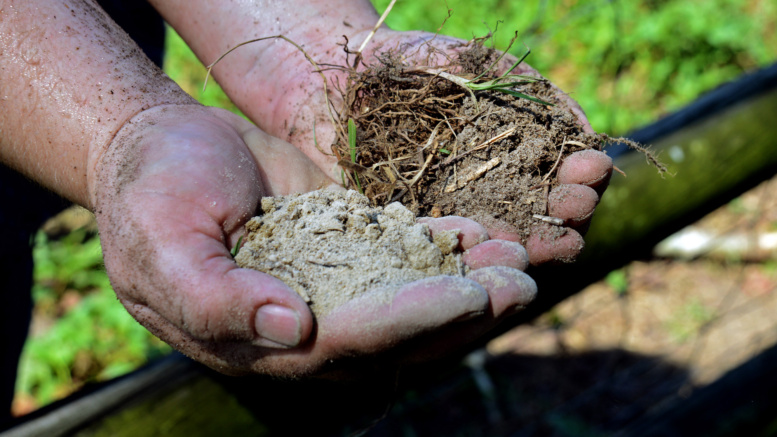BY ELENA MARSH
Insider Staff Writer
Every morning on The Slow Farm, farmer Rachel Herrick gets up with the sun — and so do her pigs and all the other critters. The first three hours of daylight are spent tending to all those critters. The feeding and watering are a bit more intense in summer’s heat and humidity.
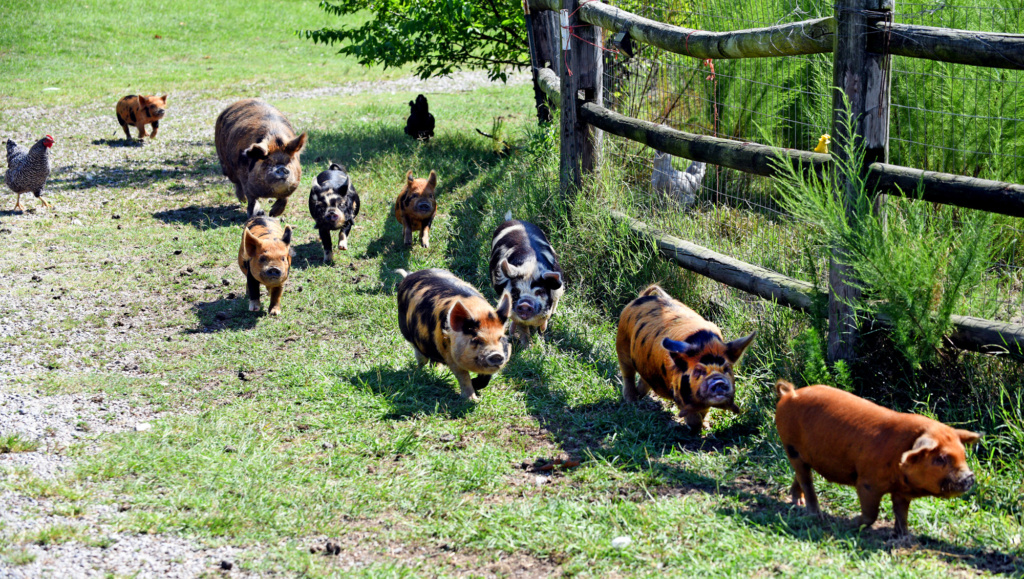
Twenty miles west, Matthew and Kelly McCaskill are on the same schedule at Revolution Farms, rising with the dawn to begin yet another day caring for their animals and preparing for farmers markets.
Although both are firmly located in the Sandhills, sand is nearly nowhere in sight around these two farms. The properties are stocked with life of all kinds, from lush native grasses to animals frolicking among each other. Something very different about The Slow Farm and Revolution Farms is teeming underfoot.
Herrick and the McCaskills are in the business of regenerative farming, a conservational approach to food and farming. It focuses on topsoil regeneration, increasing biodiversity, improving the water cycle and overall enhancement of the ecosystem.
“When I knew I wanted to be a farmer,” said Herrick, “I wanted to do farming in a way that was good for the health of the land, good for the health of the animals and good for the health of my community.”
Herrick is a third-generation farmer. When she was young, her parents didn’t see a future for farmers and encouraged her and her siblings to go to college and leave the family farm.
“When you grow up on a farm and you’re eating all of the food that you’ve grown, you never think about the bigger picture of food health and environmental health,” said Herrick.
“So when I left the family farm and I started to eat food from the grocery store, like everybody does, that was when I started to become aware of things like animal welfare and the impact of farming on the environment.”
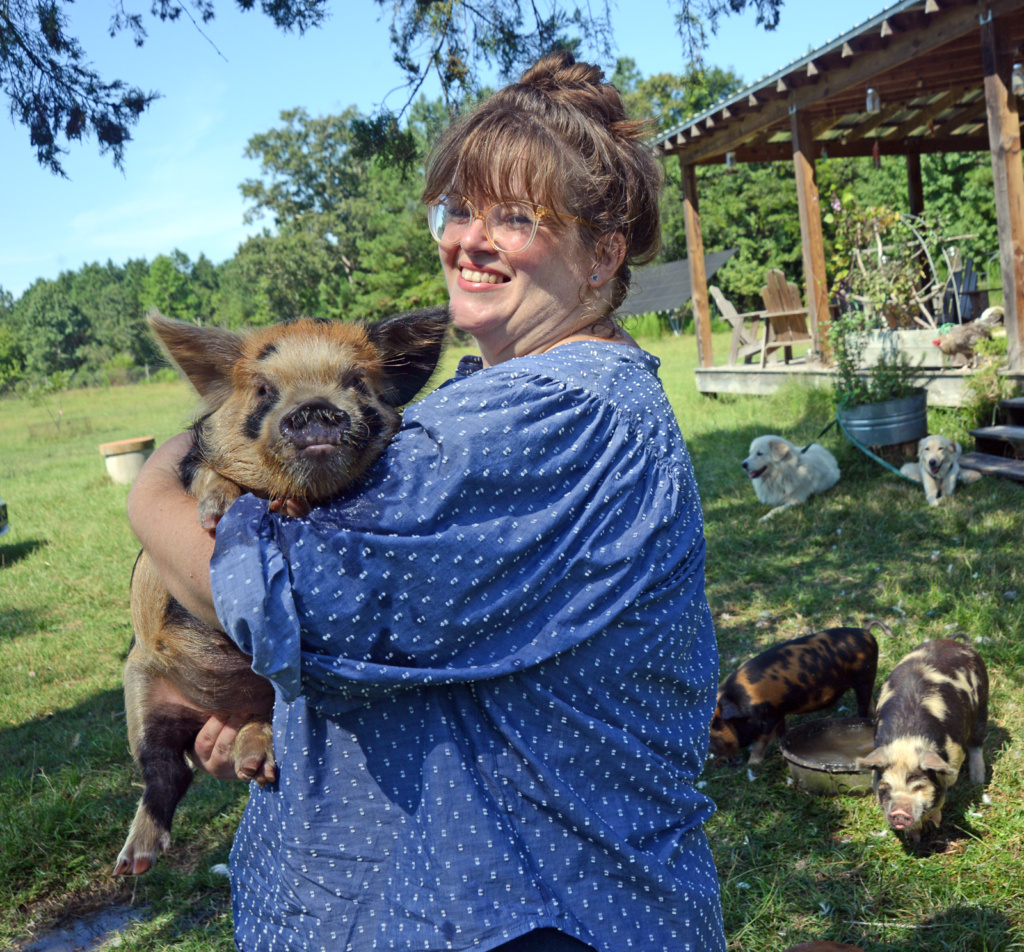
In 2015, she purchased a foreclosed tobacco farm on 47 acres in Cameron.
Herrick began mowing what grass and other greenery there was to start a decomposition process called “green manuring,” or using living plant matter to grow a topsoil layer.
“The soil life was so dead that nothing would decompose,” said Herrick. “For 18 months, I’d mow grass and it would just lay there in perfect condition.”
After centuries of turning over the sandy soil for tobacco production, lots of hard work began for Herrick to start her farm.
‘It Was Like Magic’
The McCaskills followed a similar dream. In the winter of 2015, Kelly McCaskill toured a junkyard in Carthage. She decided that it would become the farm of her and her husband’s dreams. Beneath the 100 abandoned cars and strewn garbage was land — 30 acres — a scarce commodity.
“Matt and I pulled up and I knew ‘Oh man, this is it!’ and he looked at me and said, ‘You have lost your mind.’”
Sure enough, soil samples told the couple that the soil pH was not conducive to putting food on the table for a family, much less farming in general.
“We have a very unique soil profile here,” said Kelly. “So we started doing little research plots on our land to see what would work using animals to bring back what was really abused soil.”
“We were going to have a farm,” said Matthew. “We both admire our grandparents and the way they were raised and the way that they did things. It’s so noble and modest and it’s a humble life and that really appealed to us.”
At first, their work didn’t result in much reward. It would take about three years before the junkyard in Carthage would become living pasture.
The couple started small, moving baby turkeys around in a small structure twice a day in a technique called rotational grazing. They began adding other kinds of poultry, goats and pigs to disturb the soil and add organic matter that was desperately needed.
“It was like magic,” said Kelly. “Nature knows how to heal itself and if you give it a chance to do that, it will. We now have beautiful sandestin orchard grass that we never planted because the seeds were there; they just needed the resources to grow.”
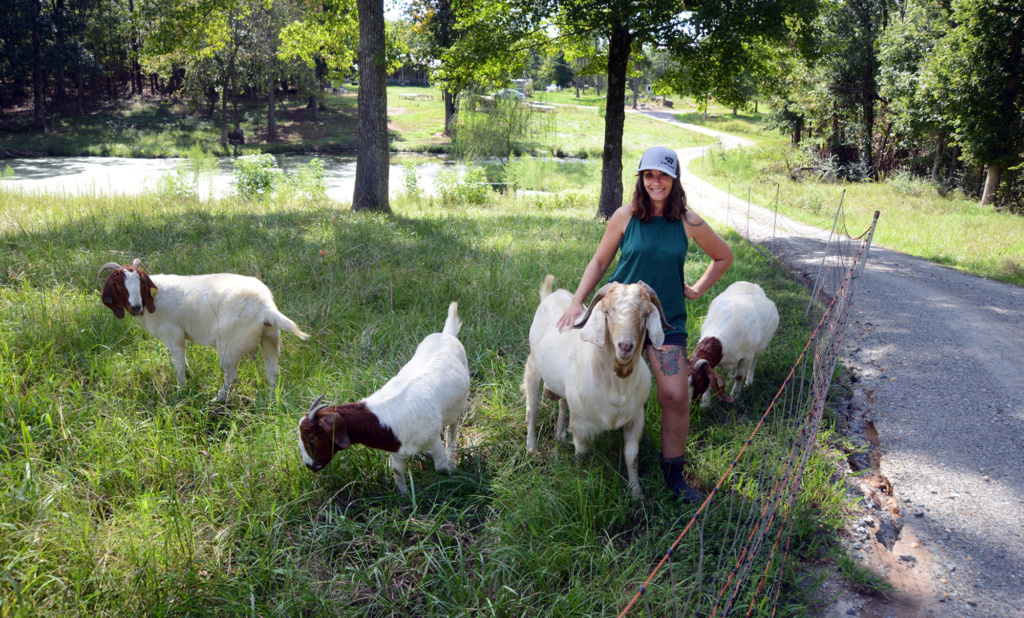
Just like in nature, every plant and animal on both farms has a job to do. The McCaskills insist that there are no freeloaders.
“A big part of what we do is deciding how we can use each individual species to provide a job,” said Matthew McCaskill. “Each one of our species will eat something that the other one won’t eat, or will scratch the ground to open up the seed bank to rejuvenate the naked soil, or will graze higher than the other one to open up the vista around the pond’s edge.”
Balancing It Out
Regenerative farming relies on a number of techniques to reestablish the land to a natural healthy place: from no-till practices that don’t disturb the natural fungus and bacteria in the soil to incorporating plants and livestock that can thrive with little to no help from the farmer.
There are three terms that are often used interchangeably to describe eco-friendly farming: organic, sustainable and regenerative.
Organic farming is focused on the consumer, and making sure that the consumers are not exposed to antibiotics or pesticides.
“The difference between sustainable and regenerative farming is useful to think about in terms of banking,” explains Herrick. “With sustainable farming you put back into the land as much as you take out. So you’re living with and have the goal to achieve a zero balance. Almost like living paycheck to paycheck.”
“But with regenerative farming it’s like trying to bank in a way that you have a savings account that grows. So, if I harvest out some amount, I put back in that amount and find a way to add a little more. That way you’re working at a net positive accounting on the fertility of the land.”
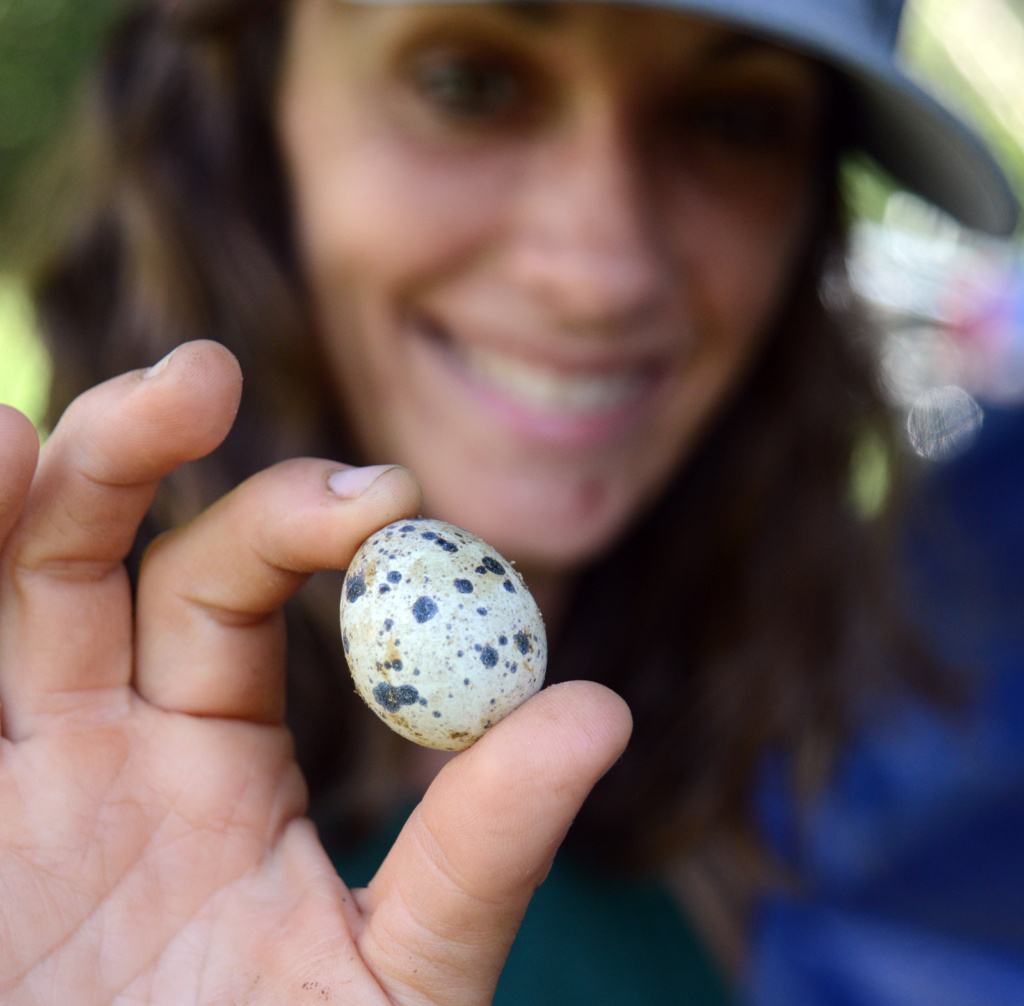
Slow Farm has planted nearly 400 different species of native fruit, nut and herb varieties over the course of its lifetime. While the natural biodiversity of the Sandhills region is Herrick’s favorite thing to “nerd-out” on, she realizes that when the pigs come out, their cuteness steals the show.
Herrick raises Kunekune (coo-nee coo-nee) pigs, a breed native to New Zealand known for their sweet temperament and their short, squished snouts. They are a grazing pig that don’t root in the soil and therefore do not disturb the delicate fungal networks Harrick has tried so hard over the years to cultivate. Herrick sells the pigs alive.
“This breed of pig has absolutely made me into a crazy pig lady,” said Herrick. “They are so wonderful to work with. They are very smart and docile and they are fun to have around. Especially when they are babies, right now I have about 35 piglets on my lawn just cavorting around on this beautiful day.”
The future on Herrick’s farm is bright. She recently received an AgPrime Grant through the University of Mt. Olive to restore and repurpose a 1930’s tobacco barn on her property. Herrick is turning the space into an herb workshop so that she can use the native plants on her property to make goods like soap, candles and bug spray, to name a few.
“All of our nuts and fruits and herbs and mushrooms now have a designated, inspected clean space where they can be processed,” said Herrick. “So that project has dominated most of the summer.”
Revolution Farms has no shortage of projects either. That means clearing land or finding ways to reuse and repurpose just about everything, including an ambulance that they turned into a refrigerated truck to haul meat to the farmers markets.
“Whenever you see an ambulance you think, ‘something is there to help,’” said Matthew. “That is what I feel our food does. We are healing our land and offering good healthy meat to our clients.”
“The way we farm here is unlike where they farm anywhere else,” said Herrick. “It takes a particular set of skills and patience and optimism to keep farming in the Sandhills. The farmers here are smart and caring and really devoted to feeding their communities.
“It is a really inspiring community to be a part of.”
Contact Elena Marsh at (910) 693-2484 or elena@thepilot.com

